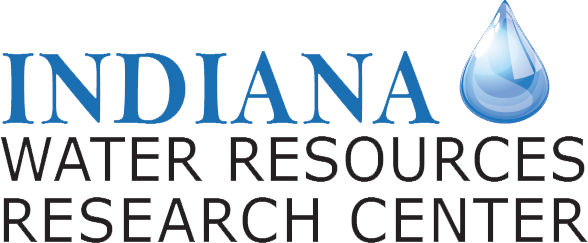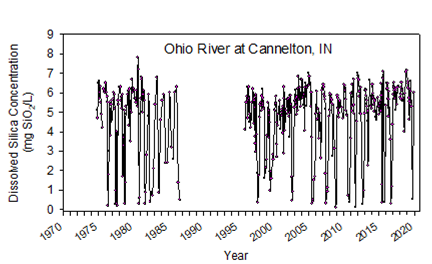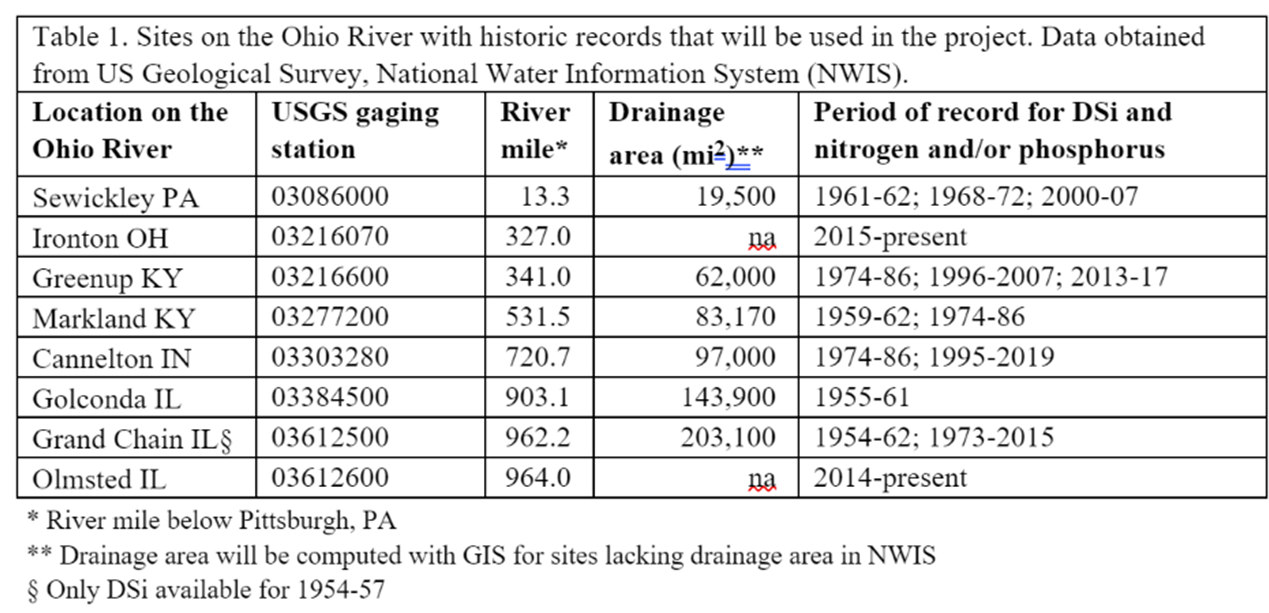Factsheet – Nutrient stoichiometry and cyanobacterial blooms in the Ohio River
A research project funded by the Indiana Water Resources Research Center through the U.S. Geological Survey’s 104B annual base grants (section 104 of the Water Resources Research Act of 1984, as amended).

Start Date: 2022-09-01
End Date: 2023-08-31
Total Federal Funds: $23,878
Total Non-Federal Funds: $41,842
Harmful algal blooms have become a problem for the Ohio River. Excess nitrogen and phosphorus are the main drivers of algal blooms in the Ohio River. Silicon also plays a role, but its role is not well understood. Some types of algae need silicon, whereas others types do not. The goal of this study was to explore the role of dissolved silicon as a potential factor contributing to harmful blooms. The first component of the study was to analyze historical US Geological Survey data going back to the 1970s. The second component was to collect new data on nutrients, silicon, and algae along the Indiana portion of the Ohio River. This project provided the first examination of the silica depletion hypothesis in a river.
Research Objectives
1. Examine the role of DSi in initiating and facilitating cyano-HABs in the Ohio River. This was done through analysis of historical data from the entire length of the Ohio River and the generation of novel data from samples collected during the 2022 cyano-HAB season (June-November) in the Newburgh pool of the Ohio River, a stretch of 50 river miles from Cannelton, IN to Newburgh, IN.
2. Investigate the role of DSi in initiating or facilitating cyano-HABs in the Ohio River using a combination of historical data analysis and original data collection, coupled with a stoichiometric index.
3. Provide the first examination of the silica depletion hypothesis in a river, while also producing data applicable to management efforts to predict cyano-HABs.

Figure 1. Historical long-term record of DSi in the Ohio River at Cannelton, Indiana, the upstream end of the Newburgh pool that extends for 50 miles along the IN-KY border. Data from U.S. Geological Survey. Note the frequent depletion of DSi.
Researcher Profile

Major Conclusions & Significance

What Does This Mean For Indiana?



